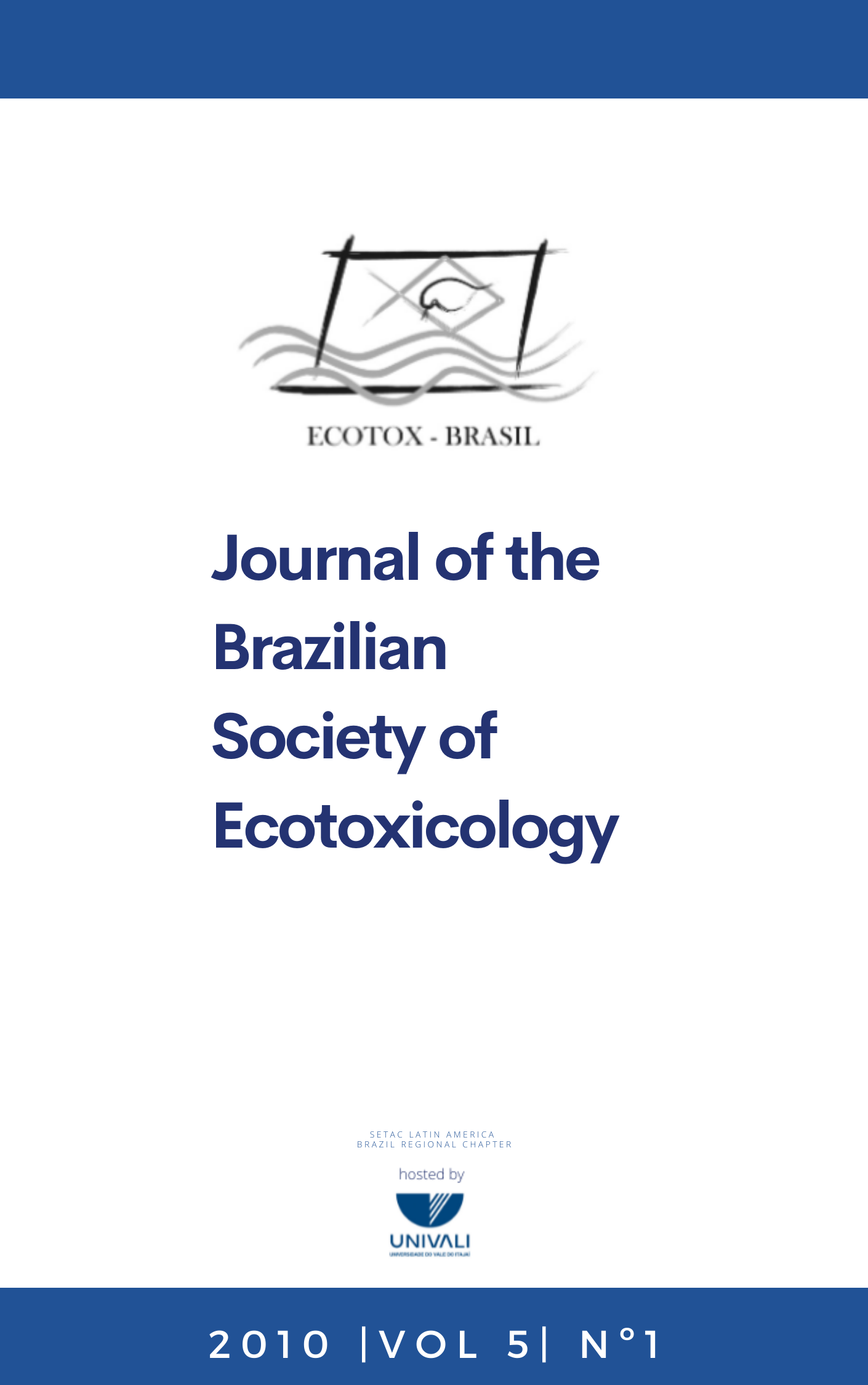Biomarkers for Mercury Exposure in Tropical Estuarine Fish
Abstract
Several studies have evaluated human risks due mercury (Hg) exposure through fish consumption. However, relatively few studies have explored effects of environmental Hg concentrations in biota, especially tropical fish species. The aim of this work was to assess in situ hematological, biochemical and genotoxic effects in tropical fish due to environmental exposure to mercury in estuarine ecosystems. A total of 282 fishes were collected from September 2003 to October 2005 in two estuarine areas: Ribeira Bay (reference area - 22° 55’ to 23° 02’ S and 44° 18’ to 44° 26’ W) and Guanabara Bay (highly impacted area by human activities - 22° 40’ to 23° 00’ S and 43° 00’ to 43° 20’ E). Total mercury levels in fish from Guanabara were twice higher than in Ribeira bay for the catfish species Genidens genidens (Ariidae), with significant differences among areas after standardization using length intervals (exposure time indicator). The species Haemulon steindachneri (Haemulidae) showed the highest mercury concentration, reflecting its position in trophic chain. Among effect biomarkers, only haematocrit, global leucometry and micronucleus assays seemed to reflect the differences on mercury exposure among areas, what may support their use for evaluations of fish exposure to mercury compounds. However, it’s necessary both laboratory experiments to establish cause-effect relationship and a continuous in situ study to obtain more information, involving more trophic levels, searching for sensible species to mercury exposure.
Downloads
How to Cite
Issue
Section
License
Copyright © 2006 ECOTOX-Brasil
Copyright notice: It is a condition for publication that manuscripts submitted to this journal have not yet been published and will not be simultaneously submitted or published elsewhere. By submitting a manuscript, the authors agree that copyright for their article is transferred to the Sociedade Brasileira de Ecotoxicologia (ECOTOX-Brasil) if and when the article is accepted for publication. The copyright covers the exclusive rights to reproduce and distribute articles, including reprints, photographic reproductions or any other reproduction of a similar nature, including translations. No part of this publication may be reproduced, stored in a retrieval system or transmitted in any form or by any means, electronic, mechanical, photocopying, recording or otherwise, without permission of the publisher.
Notice: While every effort is made by the EEC, editors and editorial board to see that no inaccurate or misleading data, opinions or statements appear in this journal, they wish to make it clear that the contents of the articles and advertisements published herein are the sole responsibility of the contributors or advertisers concerned. Accordingly, the EEC, the editorial board and editors and their respective employees, officers and agents accept no responsibility or liability whatsoever for the consequences of any inaccurate or misleading data, opinion or statement.




